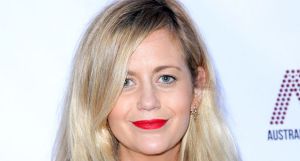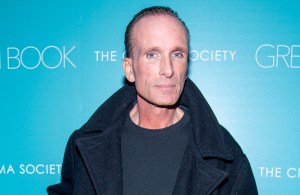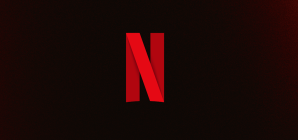By now you’ve probably binge-watched your way through Netflix‘s latest hit original series, GLOW. The ten-episode series created by Liz Flahive and Carly Mensch and executive produced by Jenji Kohan (Orange is The New Black, Weeds) hit the streaming service on last Friday.
Based on the documentary GLOW: The Story of the Gorgeous Ladies of Wrestling (also currently available on Netflix) it follows the true story of how an all-female wrestling promotion became a bonafide American phenomenon, airing on basic cable from 1986-1990.
Videos by PopCulture.com
The show stars Alison Brie and Marc Maron, with a terrific ensemble cast that includes British musician Kate Nash, Brie’s fellow Mad Men-alum Rich Sommer, and more. While the series takes some creative liberties with events, characters names and in-ring personas, it also delivers its share of real-life wrestler cameos and easter-eggs for devoted fans.
Arriving at a time of renewed interest, progress, and debate around the topics of women’s wrestling, GLOW is both a perfect time capsule of 80s camp and political incorrectness, as well as a fascinating study of those who laid the foundation for the great strides women have made in the world of pro wrestling today.
5. Backyard Flying Lessons

Following her eye-opening excursion to the men’s wrestling match, Debbie Egan decides to put her differences aside enough to not only meet Alison Brie’s character Ruth’s level of commitment, but to train together, away from the other girls.
Recalling that their teammate Carmen (aka “Machu Picchu”) comes from a well-known multi-generation wrestling family, the pair go to her family’s home to receive some backyard training from her accomplished brothers, “the Lumberjacksons.”
“I want to fly,” says Debbie, and after learning more traditional strong-style maneuvers, she accomplishes that goal, learning an off turnstile ropes flip that she and Ruth put to use in the finish of their matches, finding some harmony despite their personal issues.
They should be thankful, however, that backyard wrestling hadn’t yet become equated with the hardcore violence the setting implies today.
Up Next: Pro Wrestling Easter Eggs In GLOW
4. Black Excellence

GLOW proves the entertainment value of simple, even reductive gimmicks in the tradition of professional wrestling. Just as the real-life Gorgeous Ladies of Wrestling television product had a campy variety show quality, Jenji Kohan’s series adaptation playfully tackles matters of race and nationalism.
From the central cold war-inspired feud between Alison Brie’s “Zoya the Destroyer” and Debbie Egan’s “Liberty Belle” characters, to poking fun at the outlandish portrayals of Mid-Eastern, Asian, and Jewish stereotypes that were still so prevalent at the time.
But despite all this, one of the show’s shining strengths is it’s treatment of women of color. At first in Tamee (played by experienced pro wrestler Awesome Kong) and Cherry Bang’s owning embrace of their cartoonish ring personas “Welfare Queen” and “Junk Chain,” but also in their character development. With Cherry taking over as lead trainer, and later altering the script in their favor, making comedic tag team Stacey and Dawn go as far as dressing up in KKK robes to receive a merciless beating and humiliating defeat at the hands of their empowered opponents.
Though that stunt doesn’t make it past the TV network execs, it pays off as Sam Sylvia goes on to write Tamee’s character into the finale’s championship title picture, and Cherry gets the offer of a regular part on another network show.
3. Sheila the She-Wolf

Sheila might be my very favorite character in the cast of GLOW. A trail-blazer for today’s complex identity politics, she shows up to the first casting call already wearing exagerrated makeup and costumery resembling a wolf. At first, the ladies take her behavior as commitment to the gimmick, or method acting. But as we soon find out, she’s been dressing and behaving this way for far longer, as an expression of her true self.
“You called me a wolf… Most people just call me a freak” she tells Alison Brie’s character upon being assigned as each other’s bunkmates. Standout moments include the opening credits of an episode where we see her morning routine, and another where the girls take her roller skating for her birthday, eliciting howls of joy and giving her a cake with her age in “wolf years.”
2. Hollywood Gimmick Costume Party

In the third episode, “The Wrath of Kuntar,” the women of GLOW learn a lesson about what actually makes gimmicks work in professional wrestling.
Early on, director Sam Sylvia (Marc Maron) shares the dense first-draft of a cheesy script involving a post nuclear-apocalypse future inhabited by cyborg lesbian mutants.
This is also our introduction to the money behind Silva’s production, “walking checkbook” Sebastian “Bash” Howard. An unabashed/bonafide wrestling fan, Howard is concerned by the overly complicated sci-fi metaphors playing out before him. Following a rehearsal of the still half-baked production, he calls it a wrap and invites the ladies to a lavish party at his Malibu mansion.
Bash encourages the women to explore his costume closet, explaining that wrestling is essentially a parade of stereotypes. During the coke-fueled house party, he lectures Sam and the ladies about classic larger-than-life personas like WWF champions Iron Sheik and Gorgeous George, imparting the core principles of heels, faces, and gimmicks that can both entertain and sell a product to wider audiences.
1. “This whole thing’s a Soap Opera!”

In the series fifth episode, “Debbie Does Something” several of the women take a break from their training to observe their male counterparts, going to an actual wrestling match in search of ways to improve.
Former soap opera actress and budding star of the GLOW product, Debbie Egan (played by Betty Gilpin) comes to the perspective altering realization that the story elements in wrestling are identical to those of the daytime television soap operas her experience lies in. This is confirmed when they meet the star of the show backstage, who reveals he’s a fan of hers.
This is the series’ most cameo-packed episode, as the wrestlers are played by former WWE talent Alex Riley (as “Steel Horse”), current Lucha Underground star Joey Ryan (as “Mr. Monopoly”), and other real-life stars of the independent wrestling world.
Other Mentions:
– Debbie Egan emerging from the crowd in a planned call-out with Ruth, leading to the finale’s cold-war match between their Liberty Belle and Zoya the Destroyer characters the two have been building toward the entire season
– The slow-motion pizza delivery scene set to Tears for Fears “Head Over Heels” that sets up the romantic plot between the brooding young Justine (aka “Scab”) and the punk rocker delivery boy
– Rhonda, aka “Britannica” (played by British rocker Kate Nash) who comes up with the “super-bowl shuffle” style rap that became the real-life theme song for the GLOW television show.
– Sam Sylvia (Marc Maron) created Back to the Future. Part of his deal with Bash is that he would make GLOW a reality if the producer would bankroll his next movie– the plot of which bears some striking similarities to Robert Zemeckis’ 80s classic.
– In episode 9, “The Liberal Chokehold” the ladies crash a high-society fundraiser held by Bash’s mother for Nancy Regan’s “Just Say No” anti-drug campaign, while posing as recovering addicts under the group alias “WAD” (Wrestlers Against Drugs)
– The Real Heel of GLOW: Rich Sommer’s Mark (Debbie Eagan’s judgemental husband)… and how aptly named, as “Mark” is a derogatory term for gullible fans within the wrestling community
Photo Credit: Netflix
Most Viewed
-

JIMMY KIMMEL LIVE! "Jimmy Kimmel Live!" airs every weeknight at 11:35 p.m. ET and features a diverse lineup of guests that include celebrities, athletes, musical acts, comedians and human interest subjects, along with comedy bits and a house band. The guests for Tuesday, June 10 included Will Arnett, Jason Bateman and Sean Hayes ("SmartLess"), Bella Ramsey ("The Last of Us"), and musical guest HARDY. (Disney/Randy Holmes) SEAN HAYES, JASON BATEMAN, WILL ARNETT (Photo by Randy Holmes/Disney via Getty Images)







